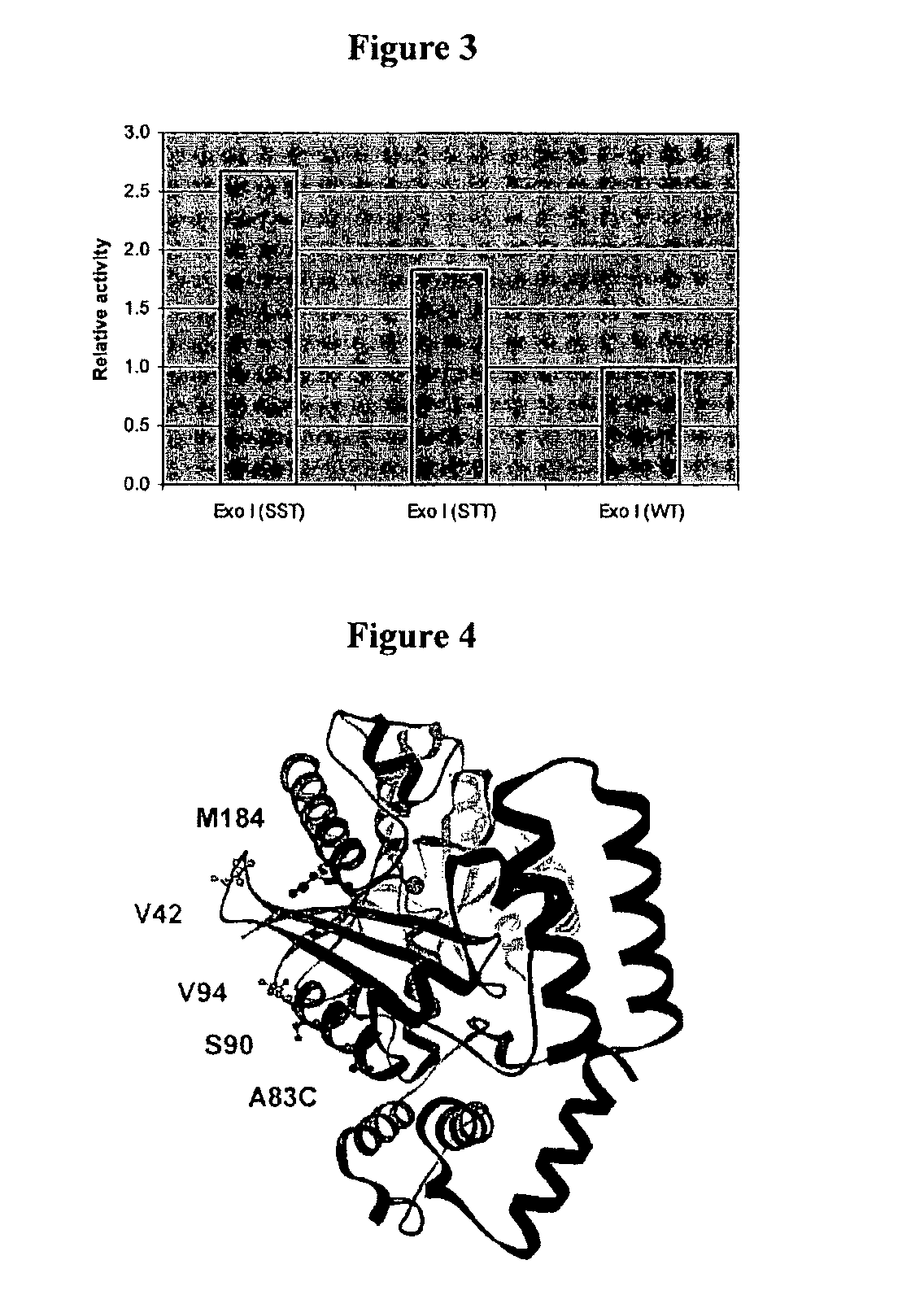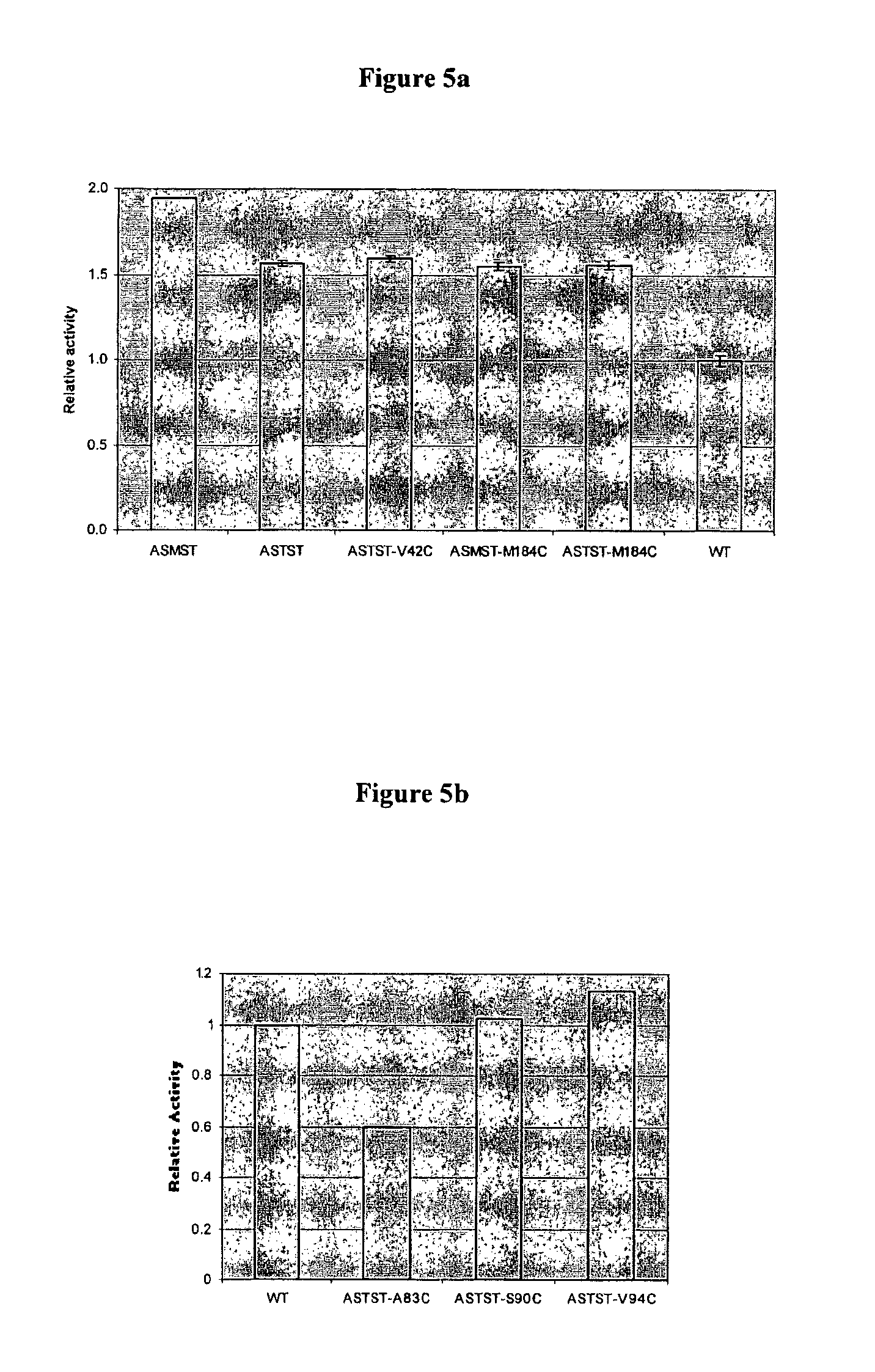Hybridization linkers
a hybridization linker and linker technology, applied in the direction of transferase, peptide/protein ingredients, other chemical processes, etc., can solve the problems of limited reaction rate and limited stability, and achieve the effect of greater stability
- Summary
- Abstract
- Description
- Claims
- Application Information
AI Technical Summary
Benefits of technology
Problems solved by technology
Method used
Image
Examples
example 1
1. Example 1
1.1 Materials and Methods
[0316]In this manifestation, an azide functional group and an alkyne functional group react with one another in the presence of a copper (I) catalyst to form a triazole ring, in the copper-catalysed alkyne azide cycloaddition reaction (CuAAC).
[0317]Copper (II) sulphate, sodium ascorbate, MOPS free acid, sodium phosphate, sodium chloride, calcium chloride, and EDTA were obtained at the highest grade available from standard laboratory suppliers, eg Sigma and Fisher. The copper (I) binding ligand (shown in FIG. 11).
[0318]Oligonucleotides with thiol end groups, or with internal azide or alkyne groups were from AtdBio (Southampton, UK); unmodified oligonucleotides were from AtdBio, or IDTDNA(Leuven, Belgium). The sequences of the oligonucleotides are shown in SEQ ID NOs: 64 to 78. In all cases of complementary oligonucleotides, the modified bases are offset from one another by one base in order to achieve the link.
1.2 Hybridization
[0319]When hybridizi...
example 2
2. Example 2
2.1 Materials and Methods
2.1.1 Overview
[0327]One method of sequencing nucleic acids using stochastic sensing involves the use of an exonuclease attached to the α-HL pore. This can be done by introducing a chemical linkage between the two proteins. The chemical linkage joins one cysteine on the exonuclease to one cysteine on the hemolysin, either directly (a disulphide bond), or via a linker molecule between the two cysteine residues.
[0328]In order to introduce the chemical linkage in a controlled and directed approach it was necessary to replace 5 naturally occurring cysteine residues found within Exonuclease I with other residues. An additional mutation would then be made in order to introduce the cysteine residue attachment point. Computer modeling was used to identify suitable attachment positions (see below).
2.1.2 Modelling Exo I CYS Knockout Mutations
[0329]Molecular modelling has been used in an attempt to predict which mutations of the 5 wild type cysteine residues...
PUM
 Login to view more
Login to view more Abstract
Description
Claims
Application Information
 Login to view more
Login to view more - R&D Engineer
- R&D Manager
- IP Professional
- Industry Leading Data Capabilities
- Powerful AI technology
- Patent DNA Extraction
Browse by: Latest US Patents, China's latest patents, Technical Efficacy Thesaurus, Application Domain, Technology Topic.
© 2024 PatSnap. All rights reserved.Legal|Privacy policy|Modern Slavery Act Transparency Statement|Sitemap



